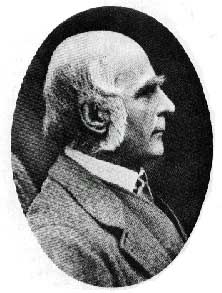- Hand Reading Mini-Course (P4) -
HISTORY: Carus's hand shape system & Galton's fingerprint discoveries
INDEX (P1) - INTRO (P2) - HISTORY (P3-7) - DISEASES - (P8-13) - PSYCHIATRY (P14-25) - PSYCHOLOGY (P26-32) - CONCLUSION (P33-34)
![]()
Hand Diagnostics & the History:
Carus's handtype system + Galton's fingerprint discoveries!
Carl Gustav Carus(1) introduced the first scientific handtype system of classification in a 1846 publication.
Carus' systems is founded on the 'functional appearance' of the hand in relationship with the temperament.
The system classifies 4 handtypes, some details are metioned in table I-1.
In the 20th century Carus' handtype system was integrated in the work of the Polish psychologist Dr. Charlotte Wolff (2).
|
Handtypes: |
Elementairy hand |
Motoric hand |
Sensitive hand |
Psychic hand |
Function: |
Grip |
Grip |
Sensation |
Sensation |
Shape: |
Thick + rude |
Fleshy + energetic |
Relative small |
Weak |
Digits: |
Short + stiff |
Longer + flexibel |
Slender + flexibel |
Slender + flexibel |
Lines: |
Not many + thick |
Many + deep |
Fine + energetic |
Fine + like a web |
Temperament: |
Earthly + common sense |
Extravert + jovial |
Sensitive + instabile |
Imaginary + intellectual |
